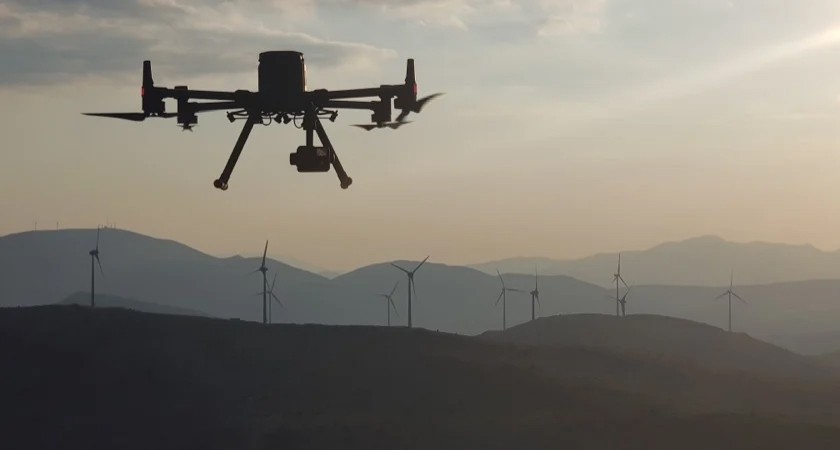
Over the past decade, countries in the MENA region have recognized the need to diversify their energy portfolios and reduce dependence on traditional fossil fuels. Renewable energy, particularly wind power, has emerged as a promising solution. The abundant wind resources, combined with advancements in technology and growing environmental concerns, have paved the way for significant investments in wind energy projects.

Masdar, a global leader in renewable energy development, has recently announced its ambitious plan to build a massive 10GW wind project in Egypt. This groundbreaking initiative is expected to provide clean electricity to millions of households, significantly reducing carbon emissions and supporting Egypt’s renewable energy targets. The project underscores the UAE’s commitment to sustainable development and its role as a regional leader in renewable energy investments.
Masdar’s 10GW wind farm in Egypt represents a major milestone in the MENA region’s transition towards sustainable energy. The project’s scale is unprecedented and is set to become one of the largest wind farms in the world. It will not only diversify Egypt’s energy mix but also create job opportunities and stimulate economic growth. Additionally, the wind farm’s clean energy generation will contribute to reducing greenhouse gas emissions and mitigating the impact of climate change.
In recent years, the use of drones has transformed operations in various industries, and the wind energy sector is no exception. Drones offer significant advantages in the planning, construction, and maintenance phases of wind farm operations. These unmanned aerial vehicles provide a cost-effective and efficient means of data collection, monitoring, and inspection, contributing to the overall success and optimisation of wind projects.
During the planning phase, drones conduct topographic surveys and assess the wind resource potential of a particular site. This data helps developers identify optimal locations for wind turbines, maximising energy generation. By streamlining the planning process, drones reduce time, cost, and environmental impact associated with traditional survey methods. This data can be used during the construction phase as well. During construction the drones can be brought out to conduct regular construction monitoring.
Once a wind farm is operational, drones continue to play a crucial role in maintenance and inspection activities. They can conduct aerial inspections of turbine blades, identifying any signs of damage, erosion, or wear. With high-resolution cameras and thermal imaging capabilities, drones enable remote visual inspections, reducing the need for manual inspections that are time-consuming and potentially hazardous for workers.

Drones equipped with sensors and data analytics software can collect real-time performance data, allowing operators to monitor the efficiency and health of wind turbines. By detecting anomalies and potential issues early on, operators can optimise maintenance schedules and minimise downtime, leading to improved energy production and cost savings.
The MENA region’s vast untapped wind resources make it an ideal location for the development of large-scale wind projects. The favorable climatic conditions, including consistent wind patterns and wide open spaces, provide an ideal setting for harnessing wind power. By leveraging these natural advantages, countries in the region can tap into the vast potential of wind energy, reducing their reliance on fossil fuels and creating a sustainable future.

While the prospects for wind energy in the MENA region are promising, several challenges need to be addressed. One key challenge is the integration of intermittent renewable energy sources into existing power grids. However, advancements in energy storage technologies and grid infrastructure are steadily addressing these challenges, making wind energy a viable and reliable source of power. Furthermore, the shift towards wind power presents significant opportunities for investment, job creation, and technology transfer, boosting local economies and fostering innovation in the region.
The success of wind energy projects in the MENA region relies on collaboration and knowledge sharing among countries. By exchanging best practices, technological advancements, and regulatory frameworks, countries can accelerate the deployment of wind power projects. Collaborative efforts can also foster regional energy integration, allowing for the sharing of surplus renewable energy across borders, enhancing energy security, and promoting sustainable development on a broader scale.
Masdar’s visionary 10GW wind project in Egypt marks a significant step forward in the MENA region’s journey towards a greener and more sustainable energy future. This initiative exemplifies the growing recognition of wind power’s potential to transform the energy landscape in the region, diversify economies, and mitigate climate change. As the MENA region embraces wind energy, it is poised to become a global leader in renewable energy production, driving economic growth, , job creation, and environmental stewardship. The wind revolution is underway, and its impact on the MENA region is set to be transformative.